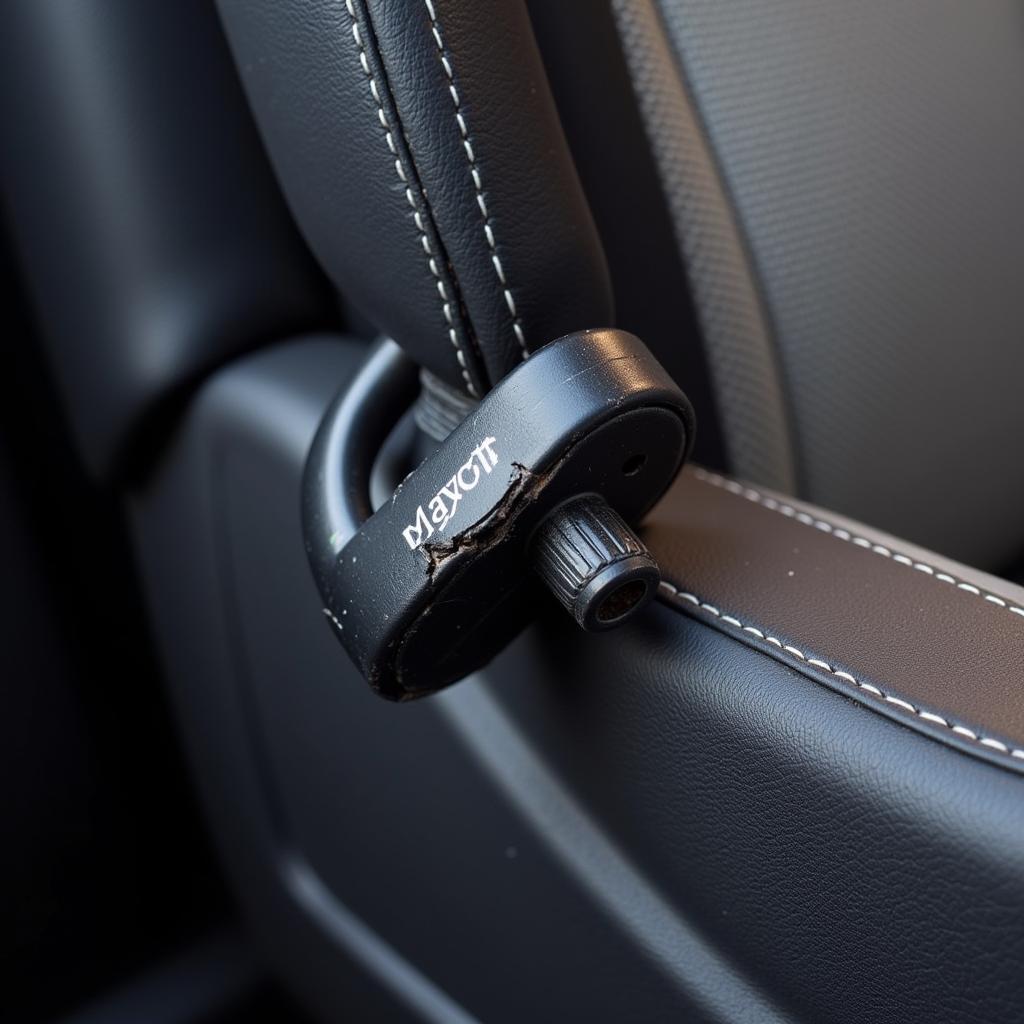The seat belt warning sound is a crucial safety feature in your car, reminding you and your passengers to buckle up. So, it can be concerning when your seat belt warning sound isn’t working correctly. This issue could indicate a problem with several components, from a faulty seat belt buckle to a software glitch. This article will guide you through the common causes of a malfunctioning seat belt warning sound and provide potential solutions to get your safety system back on track.
Common Causes of a Malfunctioning Seat Belt Warning Sound
Several culprits could be responsible for your silent seat belt warning. Here are some of the most common:
- Faulty Seat Belt Buckle/Sensor: The buckle itself houses a sensor that detects whether the seat belt is fastened. If this sensor malfunctions, it may not communicate with the car’s computer, resulting in a silent warning.
- Wiring Issues: The wiring connecting the seat belt buckle sensor to the car’s electrical system can become damaged or corroded over time. This damage can disrupt the signal, leading to a non-functional warning sound.
- Software Malfunction: Like any computer system, your car’s software can experience glitches. A software malfunction can disrupt various systems, including the seat belt warning chime.
- Seat Belt Warning Sound Deactivated: Some vehicles allow you to deactivate the seat belt warning sound, either through the infotainment system or by using a specific button combination. It’s possible the warning has been accidentally turned off.
- Blown Fuse: A blown fuse in the circuit related to the seat belt warning system can cause the sound to stop working.
- Faulty Instrument Cluster: In some cases, a problem with the vehicle’s instrument cluster, which houses the warning lights and chimes, could be the root cause.
 Faulty Seat Belt Buckle
Faulty Seat Belt Buckle
Troubleshooting Steps for a Seat Belt Warning Sound
If your seat belt warning sound isn’t working, here’s a step-by-step guide to help you diagnose and potentially fix the problem:
- Check Your Owner’s Manual: Before diving into troubleshooting, consult your vehicle’s owner’s manual. It may provide specific instructions on resetting the seat belt warning system or information about any deactivation features.
- Inspect the Seat Belt Buckles: Examine all seat belt buckles for visible damage, debris, or loose connections. Ensure they latch securely.
- Verify Warning Sound Activation: Some vehicles have a setting to adjust the volume of warning chimes or even deactivate them. Refer to your owner’s manual to check if the seat belt warning sound is activated and at an audible volume.
- Check the Fuses: Locate your vehicle’s fuse box (usually under the dashboard or hood) and consult your owner’s manual to identify the fuse associated with the seat belt warning system. Visually inspect the fuse for any signs of damage or use a multimeter to test its continuity.
- Inspect for Loose Wiring: Carefully inspect the wiring harness connecting to the seat belt buckle. Look for any loose, damaged, or corroded wires. If you discover any issues, consult a qualified mechanic for repair.
When to Consult a Professional
While some seat belt warning sound issues can be resolved with simple troubleshooting, others require the expertise of a qualified mechanic, especially if they involve:
- Software-Related Issues: Diagnosing and fixing software problems requires specialized tools and knowledge.
- Complex Electrical Faults: Tracing and repairing electrical issues related to the seat belt warning system can be complex and potentially dangerous without the proper training and equipment.
- Replacing Faulty Components: Replacing components like the seat belt buckle or sensor typically involves intricate procedures best left to professionals.
Remote Diagnostics and Software Solutions
Advancements in automotive technology have paved the way for remote diagnostics and software solutions for certain car problems.
“We’re now able to diagnose and fix a range of car issues remotely, including some related to seat belt warning systems,” says automotive electrical engineer, Sarah Chen. “By accessing the vehicle’s computer remotely, we can run diagnostics, check for software glitches, and even install software updates – all without the car ever having to step foot in a shop.”
While not all seat belt warning sound issues can be solved remotely, this technology offers a convenient and efficient option for specific problems. If you suspect your seat belt warning problem might stem from a software or electronic control unit (ECU) issue, inquire with your dealership or a reputable remote diagnostics service provider.
 Remote Car Diagnostics
Remote Car Diagnostics
Seat Belt Safety: A Priority
A functioning seat belt warning sound is crucial for your safety and the safety of your passengers. It serves as a vital reminder to buckle up, significantly reducing the risk of injury in an accident.
If you’ve tried troubleshooting the problem yourself and the seat belt warning sound is still not working, don’t delay seeking professional help. A qualified mechanic can accurately diagnose the issue and perform the necessary repairs to restore this essential safety feature.
